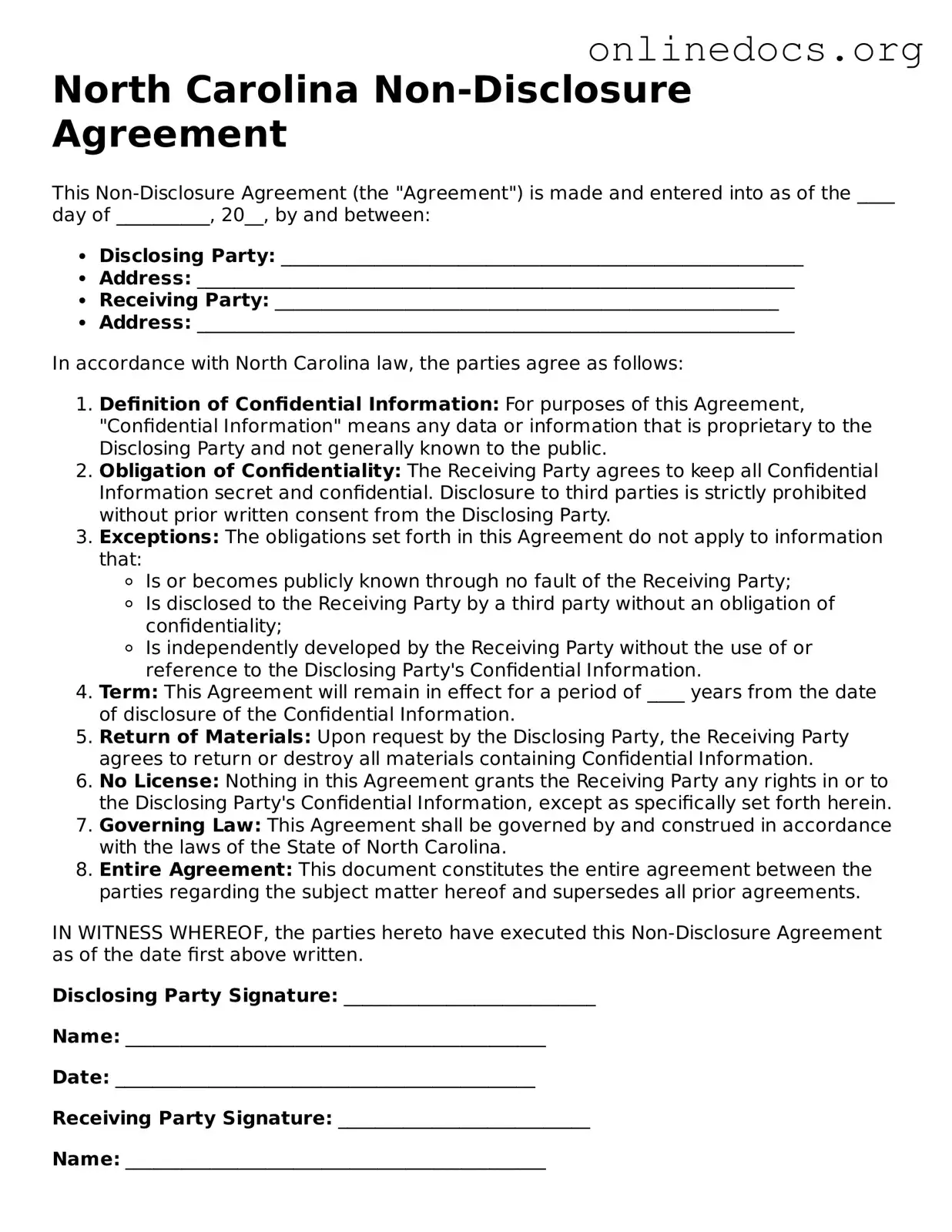Filling out a Non-disclosure Agreement (NDA) in North Carolina can be a straightforward process, but many individuals make common mistakes that can lead to significant issues down the line. One prevalent error is failing to clearly define the confidential information. Without a precise description, the NDA may not effectively protect sensitive information.
Another mistake is neglecting to specify the duration of the confidentiality obligation. Parties often overlook how long the information should remain confidential. This can create confusion and disputes later, as one party might assume the obligation lasts indefinitely while the other believes it has expired.
Many individuals also forget to include the parties involved. An NDA should clearly identify all parties who are bound by the agreement. If a party is not explicitly mentioned, they may not be held accountable for breaches of confidentiality.
In addition, some people fail to include the purpose of the disclosure. Without stating why the information is being shared, the NDA may be too broad, making it difficult to enforce. A well-crafted NDA should clarify the context in which the information will be used.
Another common oversight is not considering the consequences of a breach. Many NDAs lack clear remedies or penalties for violating the agreement. This omission can weaken the enforceability of the NDA and may leave the disclosing party without adequate recourse.
Some individuals also mistakenly believe that a verbal agreement suffices. Even if both parties agree on the terms, a written NDA is crucial for legal enforceability. A verbal agreement can lead to misunderstandings and disputes that are difficult to resolve.
Moreover, people often overlook the importance of seeking legal advice. Drafting an NDA might seem simple, but legal nuances can have significant implications. Consulting with a legal professional can help ensure that the NDA meets all necessary requirements and effectively protects confidential information.
Another frequent mistake is using outdated templates without modifications. Laws and business practices evolve, and relying on an old template can lead to gaps in protection. Each NDA should be tailored to the specific circumstances of the parties involved.
Additionally, individuals may neglect to review the NDA thoroughly before signing. Failing to read the document can result in agreeing to terms that are unfavorable or confusing. Taking the time to review every clause is essential for understanding one's rights and obligations.
Finally, some individuals forget to include a clause for dispute resolution. Without a clear process for resolving disagreements, parties may find themselves embroiled in lengthy and costly legal battles. Including a method for resolution, such as mediation or arbitration, can save time and resources in the event of a conflict.
